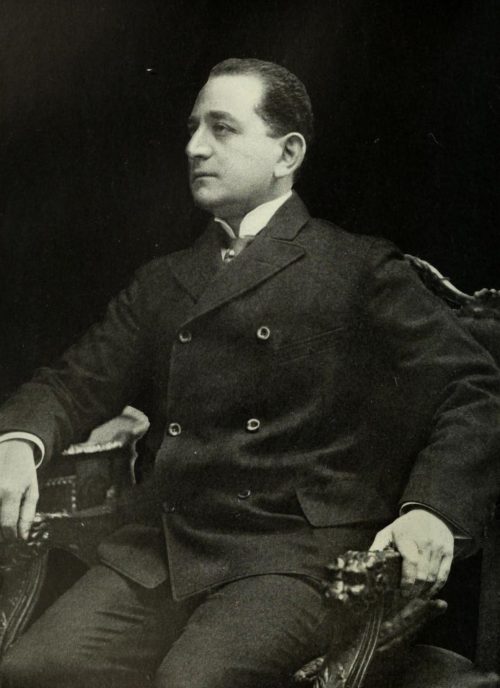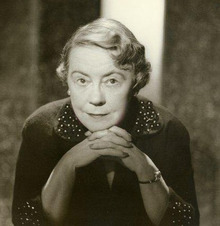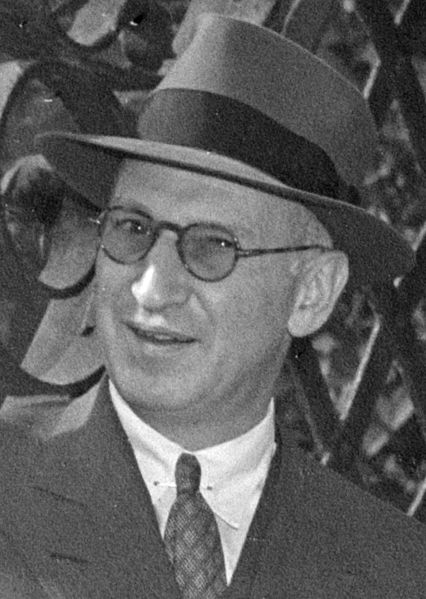Jerold S. Auerbach began reading The New York Times, one of America’s preeminent daily newspapers, way back in 1945. He has since started his day with the broadsheet, but claims it has a “Jewish problem.” A professor emeritus of history at Wellesley College, he sets out his argument in Print to Fit — The New York Times, Zionism and Israel, 1896-2016, published by Academic Studies Press.
Auerbach contends that, due to its liberal bias, the Times had a dim view of Zionism for many years and continues to be critical of Israel.

The Times has been in the hands of the Sulzberger family since it was bought in 1896 by Adolph Ochs, the scion of German Jews. Shortly after he purchased the failing newspaper, he moved the editorial page motto, “All the News That’s Fit to Print,” to the top left corner of page 1, where it has remained ever since.
Ochs, an assimilated Jew, believed that Zionism and antisemitism were the twin enemies of Jews. As a result, the Times provided extensive coverage of the anti-Zionist sermons of Reform rabbis like Joseph Silverman, who asserted that Zionism “is based on the false premise that the Jews are a nation.” Jews, he said, are rather a “religious community.”
Throughout the early 20th century, the Times publicized the views of a litany of anti-Zionists. One of them, the banker Jacob Schiff, stated categorically that a Jew cannot be “a true American and a good Zionist at the same time.”

Despite its rejection of Zionism, the Times covered events in Palestine objectively. In 1928, Joseph Levy, an American Jew who had spent his boyhood in Jerusalem, was hired as its first foreign correspondent based in Palestine. Fluent in Hebrew and Arabic, he covered an array of topics ranging from Zionist land development and archaeological excavations to Arab opposition to British rule in Palestine.
An admirer of Zionist economic progress, he wrote, “Everywhere from Dan to Beersheba, building, planting and manufacturing are proceeding at a swift pace.” Once barren land was blooming with orange and grapefruit groves, and Tel Aviv, displaying “all the comforts and conveniences” of a modern city, was “bustling.” Levy described the Grand Mufti of Jerusalem, Haj Amin al-Husseini, a vociferous opponent of Zionism, as “a most intelligent person with an exceptionally charming personality.”
Auerbach points out there was “a conspicuous disconnect” in the Times between Levy’s impartial reporting and the paper’s editorial policy, which held that Judaism was a religion devoid of national content.

Ochs’ successor, his son-in-law Arthur Hays Sulzberger, shared his aversion to Zionism and his perception that the Times was not a “Jewish” newspaper. Such were his convictions that he declined t0 appoint Washington bureau chief Arthur Krock — a convert to Christianity — editorial page editor, forced Jewish reporters whose first name was Abraham to sign their byline with the initial “A,” and supported the “union of Jews and Arabs within a binational Palestine.”
Sulzberger was a member of the American Council for Judaism, a fiercely anti-Zionist organization. “I do not believe Jews are a people,” he wrote. Due, in part, to this belief, he downplayed coverage of Nazi Germany’s extermination of Jews during the Holocaust.
Sulzberger did not try to influence his reporters in the field. Clifton Daniel, who covered Arab-Jewish strife in Palestine prior to the 1948 Arab-Israeli war, filed fair stories and provided laudatory coverage of “the pioneering enterprise of the Jewish colonists.”
Nor was Sulzberger overly critical of the 1947 United Nations Palestine partition plan. A Times editorial expressed doubts about “the wisdom of erecting a political state on the basis of religious faith,” but noted that the resolution should command “the respect and the loyal support of all nations and all peoples.” Foreign affairs columnist Anne O’Hare McCormick, though, called for the internationalization of Jerusalem.

Having reconciled itself to Israel’s existence, the Times carried a glowing profile of its first prime minister David Ben-Gurion, comparing him to Franklin Roosevelt. On Israel’s first anniversary, a Times editorial cited its achievements. During Israel’s second year of statehood, another editorial noted that “this little country has earned its place in the world through the courage, endurance and devotion of its people.”
Although Sulzberger claimed that the Arab-Israeli dispute was a “conflict of refugees,” he acknowledged that Israel could not afford to allow Palestinian Arab refugees to return, saying they would constitute a “fifth column.”
Nonetheless, Sulzberger continued to give the American Council for Judaism a forum in the pages of the newspaper. Its president, Lessing Rosenwald, warned of the baneful influence of Zionism, while its executive director, Elmer Berger, insisted that American Jews must not become “mere appendages to Israeli national interests.”

The Times castigated Israel’s 1950s reprisal policy as “morally and practically bad” and condemned Israel’s invasion of Egypt in 1956, but urged Arab states to accept Israel’s existence and “give up their ambition to drive the Israelis into the Mediterranean.”
James Reston, probably its most respected columnist, expressed admiration for Israel’s lightning victory in the Six Day War. But a succession of editorials urged Israel to stop building settlements in the occupied areas and relinquish its territorial gains in the interests of forging a lasting rapprochement with its Arab neighbors.
An editorial writer dismissed Prime Minister Menachem Begin’s avowal of Israeli sovereignty in the West Bank as a “position of historical bad faith and tactical folly.” As Auerbach correctly suggests, the Times was not partial to Begin, saying his “grudging response” to Egyptian President Anwar Sadat’s 1977 peace initiative would undermine Israel’s moral credibility.
The Times, too, condemned Israel’s “sneak attack” on Iraq’s nuclear reactor in 1981, while columnist Anthony Lewis branded Israel’s 1982 invasion of Lebanon as “a war to exterminate Palestinian nationalism.”
Given Auerbach’s contention that the Times‘ coverage of Israel was often slanted and reeking of “moral equivalence,” one is less than surprised to read his appraisal that the newspaper lacked a correspondent in Israel who “could write informatively about its society, politics, culture and strategy.”

One suspects that his analysis is rooted in his conservative approach to the Arab-Israeli conflict. Auerbach, for example, attacks Pulitzer Prize-winning correspondent Thomas Friedman, who, he claims, “seldom missed an opportunity to highlight criticism of Israel, especially by Israelis.”
Auerbach reminds readers that the Times‘ current publisher, A.G. Sulzberger, is not Jewish. Confirmed as a child in an Episcopalian church in Manhattan, he was raised in his mother’s religion. He goes on to state that there was “little discernible difference” in its “critical coverage”of Israel during his era as publisher.
The Times, he adds, was tough on Benjamin Netanyahu, who combined “American packaging and native ruthlessness,” according to correspondent Serge Schemann. “Once again, as during the Begin-Shamir years between 1977 and 1992, a right-wing Israeli government stirred deep concern at the Times over Jewish identity and loyalty,” writes Auerbach.

After praising two unwaveringly pro-Israel columnists, A.M. Rosenthal and William Safire, he points out that, from 2006 to 2007, the Times published twice as many op-ed pieces critical of Israel as the inverse.
During the presidency of Barack Obama, he observes, its coverage of Israel was framed within the “increasingly strained relationship” between the U.S.president and Netanyahu and the “Palestinian victimization narrative that pervaded the Times.” He accuses Jodi Rudoren, an Israeli bureau chief, of focusing on “Palestinian suffering and Israeli transgressions,” in keeping with an inclination “already deeply embedded in the Times.”
In closing, Auerbach claims that the “liberal bias” of the Times has “constricted and distorted” its coverage of Israel. In this respect, the Times has remained faithful to the principles of its founder and his descendants.
Going one step further, Auerbach contends that its enduring motto has degenerated into “news printed to fit” to accommodate its “discomfort with the idea of a thriving Jewish democrat state in the ancient homeland of the Jewish people.”
Auerbach’s conclusion is far too harsh and unfair, and is disproven by his comprehensive account of the manner in which the Times has covered Israel since its birth in 1948.
